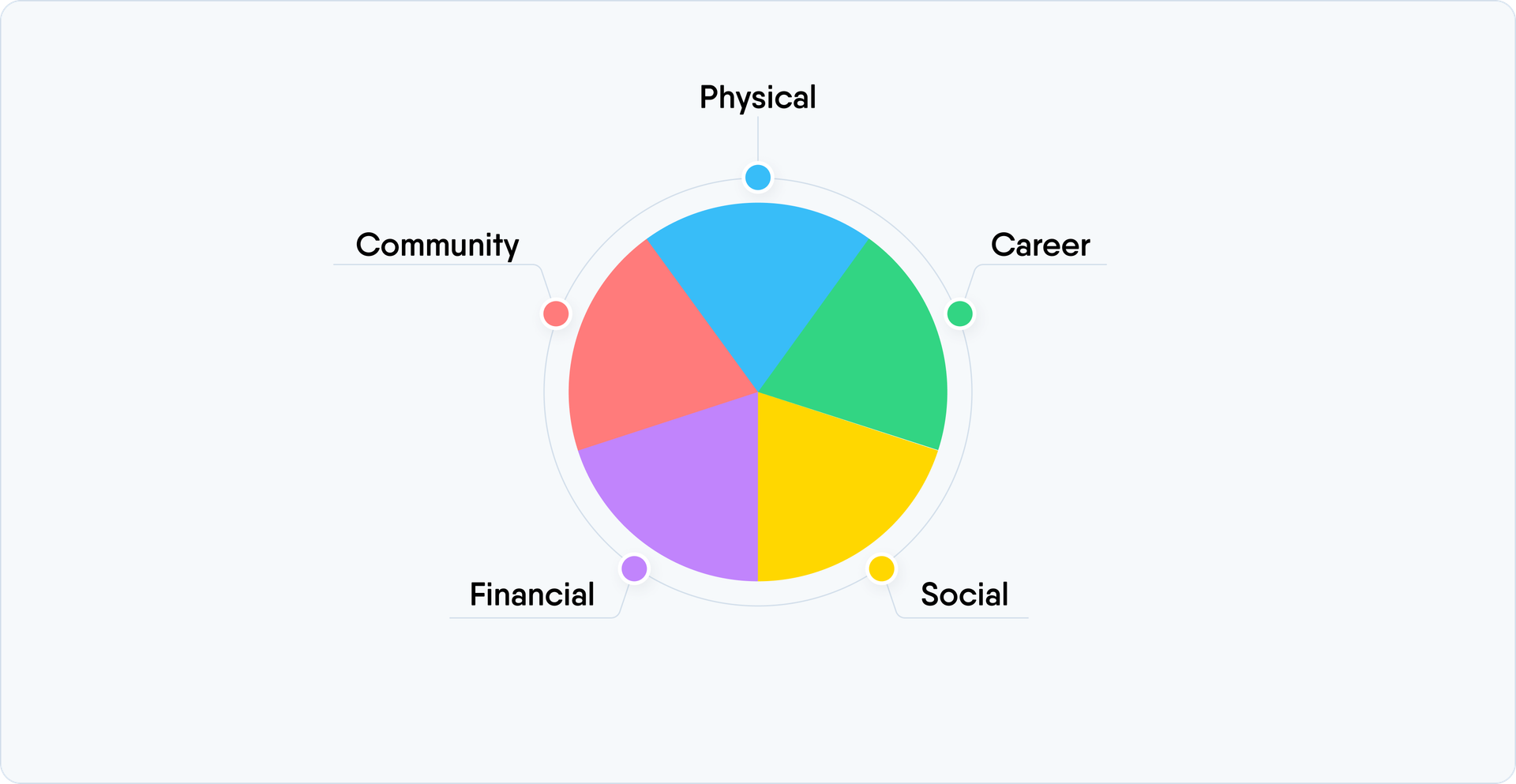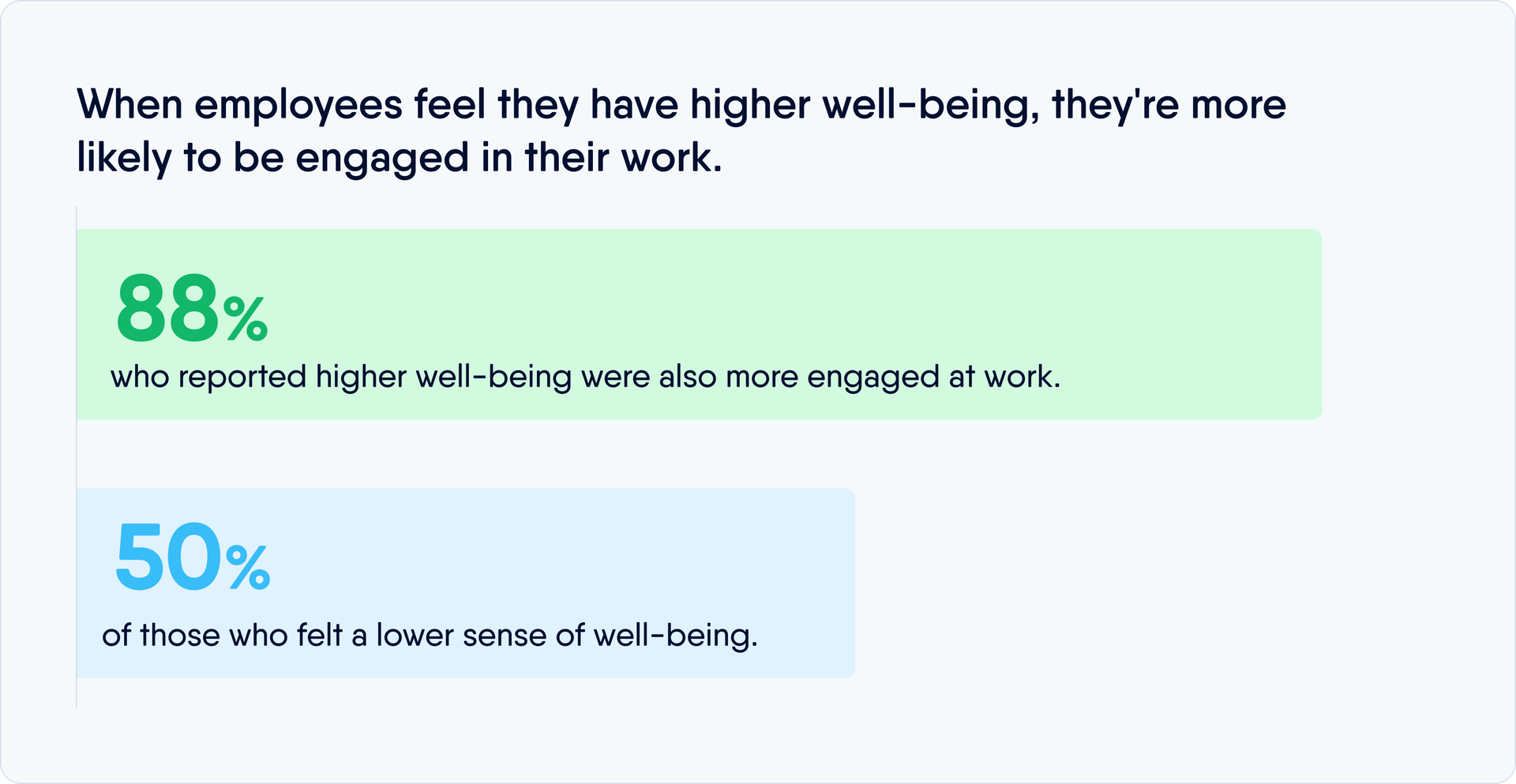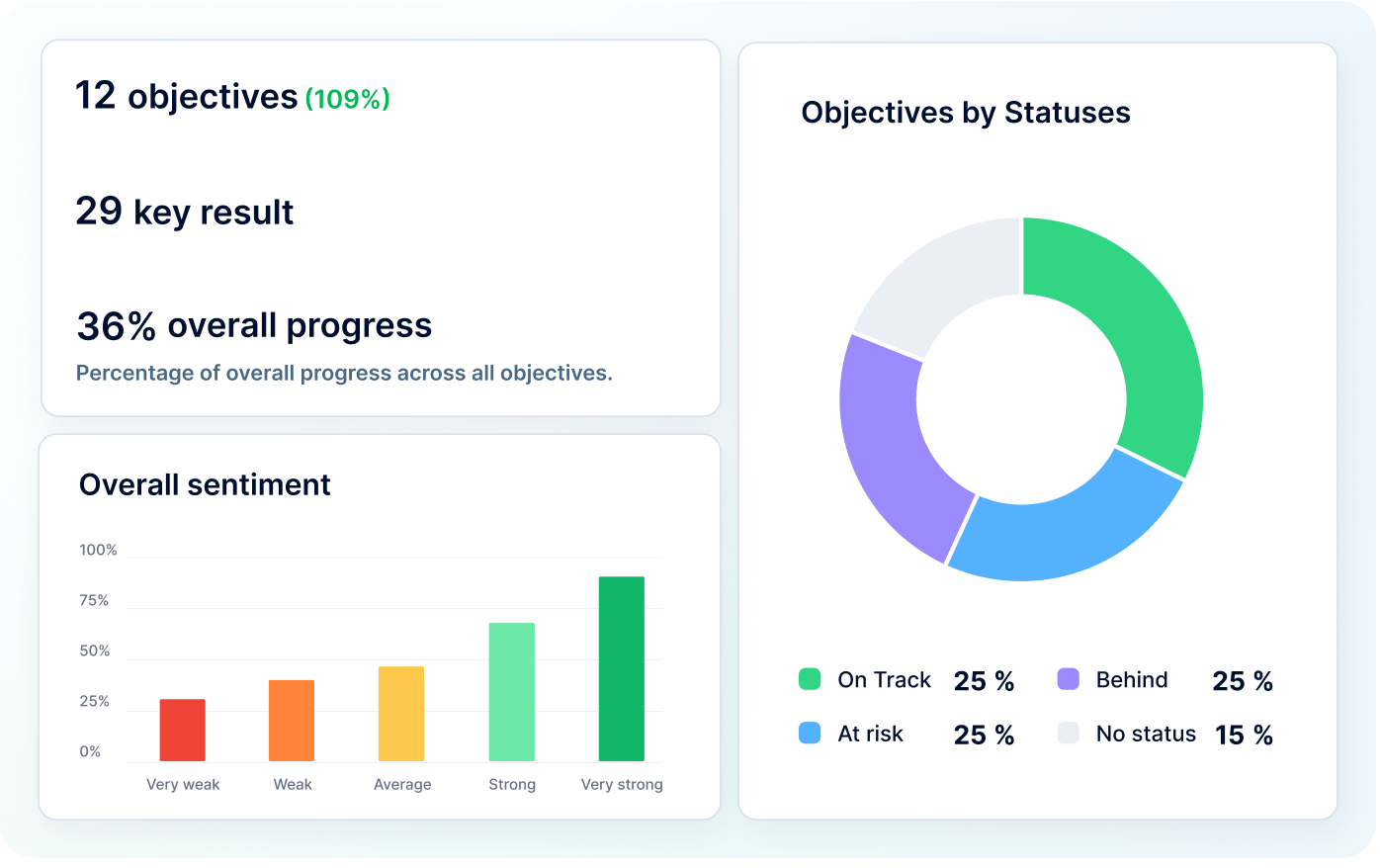
Well-being culture: Why and how to manage employee well-being
Employee well-being is a part of the overall corporate culture that no developed company can do without today. Why is it so important to implement programs not only for adaptation, development, and training of staff, but also for well-being – we will discuss today in a brief overview of the concept of “well-being.”
It all started with so-called “fitness programs” in the USA – incentives for health improvement. A trend that came to European companies from the States since the 1970s gradually evolved into a more generalized “wellness” movement – it also addressed issues of physical activity. And in 1989, a national day of health and fitness for employees was even established in the USA. Well-being as a comprehensive approach, which includes not only physical condition but also other aspects, emerged recently, in 2010, after the release of the study “Well-being: The Five Essential Elements.” What does it mean?
The CIPD defines the concept of well-being as “creating an environment for achieving satisfaction that enables the employee to thrive and fully realize their potential for the benefit of themselves and their organization”. Furthermore, support for well-being needs to be addressed continuously, from the hiring process to the last working day, and should be structured in such a way that a balance is found between the needs of the employee and the needs of the company.
What does the concept of well-being in a company mean?
In the same 2020 study conducted by two employees of Gallup, Tom Rath and Jim Harter, they identified five so-called core elements of human well-being:

- Career
- Health
- Finances
- Social connections
- Public connections
Based on this general model, Dr. Martin Seligman, President of the American Psychological Association and a world-renowned psychologist, developed his model in 2011 – PERMA. It is actively used as the foundation for corporate well-being programs to this day. Why such an acronym? It stands for the first letters of the five components of well-being:
- Positive Emotions – positive emotions, good impressions
- Engagement – engagement in what you do every day
- Relationships – relationships with others
- Meaning – purpose and richness of existence
- Accomplishment – accomplishments
How to apply the PERMA model in work conditions and derive the ideal formula for everyone who is about to implement a culture of well-being in a company or organization? This question was also posed by the consultants of Bailey and French, pioneers in the HR field of positive psychology. They correlated each element of the model with work values and added two more components – Physical and Financial Well-being.
Here is what we got:

In the work, both general understanding and the Bailey and French model can be applied. The authors of the latter recommend that managers also ask themselves three global questions when deciding to improve employee well-being.
- What measures are we taking to provide support to staff in three areas: Financial, Physical, and Psychological?
- Is our approach aimed at symptomatic relief of well-being issues, or does it have a strategy?
- What else can we implement to improve the well-being of individuals, leaders, teams, and the organization as a whole?
But before trying to build a well-being culture from scratch, it's important to understand two things: why it is needed and what it influences?
Why is it important to focus on employee well-being?
Psychological imbalance
Gallup states that at least 7 in 10 millennials have experienced burnout at work at some point. The issue of burnout is not the only focus of well-being care, but it is quite telling when it comes to the numbers. Burnout leads to low engagement and effectiveness: 48% of employees, according to Gallup, will leave the company for these reasons.
The American Psychological Association reports a record increase in mental health issues among employees worldwide of 71.9% from 2011 to 2020. Every second, 1 in 6 working-age adults around the world experiences work-related mental health problems.
Work-life imbalance
The 2020 report from CIPD showed that employees around the world are unable to find a compromise between work and life, which in turn negatively affects their health. The so-called concepts have emerged:
- absenteeism – forced absence from the workplace due to stress and burnout (the rate increased by 37% over the year).
- presenteeism – staying late at work even after the end of working hours, working overtime, often without effectively completing tasks or while feeling unwell (89% higher than in 2019).
What do companies lose?
If employees are tired, burnt out, and not effectively performing their work, the company loses profit. According to McKinsey, companies in the U.S. lose up to $200 billion annually on resolving employee health issues and searching for new ones when a lack of well-being causes voluntary turnover. 54% of employee workdays in the UK are spent annually on issues related to physical and mental health.

Limeade Institute and several other organizations focused on labor protection and HR processes state: 88% of employees who feel cared for regarding their well-being by the company are more engaged in their work and want to contribute.
What work aspects does employee well-being influence?
From a business perspective, employee well-being affects:
- Productivity. Well-being increases productivity and efficiency. When employees feel good, they lead a healthier lifestyle and make better decisions.
- Team spirit/morale. Employees feel more competent and valued when their needs are met at all levels, including physical, mental, and financial.
- Reputation, attraction, and retention of talent. If your company has a good reputation in the market as an employer that respects and supports work-life balance, you are more likely to attract qualified candidates and retain your employees for a longer period.
- Customer orientation. Happy employees are the best brand ambassadors. If you treat them well, employees will be interested in understanding the products and services and providing higher quality care to meet customer needs.
Of course, these are not all the positive effects of well-structured employee welfare programs – take, for example, the benefits for the individual. This includes the development of healthy habits, reduced risk of cardiovascular diseases, improved sleep and quality of rest, increased self-control and ability to cope with stress – and, as a result, a lower likelihood of burnout at work and mental health issues.
3 strategies for building a culture of well-being in a company
Above, we outlined the most comprehensive model of well-being culture: globally, it includes three major elements: psychological, financial, and physical well-being of employees.
What steps are needed to ensure that these three elements are covered? You can develop three well-being strategies to leave nothing unattended.
Physical health
In 2020, Google announced that they successfully transitioned 195 thousand employees to a vegetable-based diet. This impressive figure was achieved by the well-known company with relative ease: they conducted an experiment. All unhealthy food, sodas, chips, and bags of nuts and candies were moved to the far corners of the office, requiring employees to first walk to them and then retrieve them. Meanwhile, healthy food – salads, fruits, vegetables, and bottled water – was placed within easy reach of the offices. As a result, the amount of water consumed increased fivefold compared to soda, and now, 2300 salads are eaten for breakfast, whereas no one used to eat them before.

The famous Google salads. Source: davidlebovitz
The Google example is important not because it is about nutrition – it is a vivid illustration that one does not need to spend an exorbitant amount of money for well-being. It is enough just to change the approach.
What else is rational to do for the physical component of the well-being concept:
- increase physical activity: benefits for corporate sports, yoga sessions, health days
- organize healthy eating programs and conditions for it
- create programs to combat bad habits
- conduct medical examinations or pay for health screenings
- plan the workspace: ventilation, access to windows, drinking water nearby
- vaccinate employees.
Mental health
8000 employees of the German corporation SAP are on a waiting list to participate in the Search Inside Yourself program. This is part of the psychological support that SAP provides to its employees – the program is conducted by 9000 coaches who help cope with daily stress and recognize the early signs of depression and burnout.
Hiring 9000 coaches is not necessary – but you can launch mentoring support or a helpline with a psychologist in your company. What other steps can be taken?
- access to psychological support lines
- seminars and practices on mental health issues: training sessions with employees, games, and group work
- meditation and spiritual practices
- feedback and surveys to assess stress levels
- regular meetings with the team in the office and outside of it (Zoom conferences during the pandemic)
Automation of psychological factor monitoring in the company
It is very important not to miss the moment when an employee starts to burn out or demotivate themselves and their team/department. This will negatively affect the overall results and can hit the company's reputation - especially if the process is allowed to continue. Of course, the HR department cannot personally monitor every employee - this is where automated systems come to the rescue. Here is what can be done with their help:
- Track the mood indicator and generate regular reports.
- Schedule one-on-one meetings regularly to listen to the employee and their thoughts on the project, tasks, goals, and communication.
- Simplify routine processes - for example, provide access to automatic tracking of days off and vacation, and access to communication with other employees and departments.
- Clearly plan goals and tasks using personal OKRs, so that the employee's and manager's vision of joint plans aligns.
- Regularly conduct 180 and 360 evaluations, adapting them flexibly to employees, departments, or the company as a whole.

You may also be interested in: Exploring the eNPS survey: Are employees ready to recommend your company and why is it important
Financial awareness
CIPD researched the impact of material well-being issues on work processes. 19% of respondents reported that they lost sleep due to financial problems. 10% of those surveyed said that they find it difficult to focus on work tasks because they are concerned about financial issues. What can be done to prevent stress due to financial instability among staff:
- loyalty programs, corporate discounts
- seminars/webinars/coaching sessions on financial literacy
- free access to financial literacy resources – books, trainings, courses, services
- personal consultations on financial issues with a specialist
The concept of well-being requires a systematic and step-by-step approach – HR specialists have a major role in ensuring it. Unfortunately or fortunately, it is not possible to implement just one aspect of well-being in a team – for example, providing a discount on the gym and considering the job done. After 2020, the importance of a comprehensive approach will only increase – humanity needs to remember that it is necessary to move, take care of emotional well-being, and manage finances wisely.
With over five years in HR tech content creation, Maria explores how technology, people, and culture shape the workplace of today. Her interests include HR, AI, IT, and personal development, and she brings a data-driven, human-centered perspective to her writing.
Get started with PeopleForce today
Automate your HR routine to create a high performance culture in your company. PeopleForce is your best HRM alternative to stay business driven but people focused.

Recent articles
🎉 PeopleForce Wrapped 2025: a year of HR magic
2025 wasn’t just about shipping features — it was about making HR work better at scale. Let’s unwrap everything we built together.
OKRs vs. KPIs: Choosing the right framework
Unsure when to use OKRs or KPIs? Learn how to choose the right framework to maximize your team’s success.
Why OKRs feel like hell (and how to make them simple)
Why OKRs feel like chaos: missed goals, messy reviews, and burnout. Learn how to simplify goal-setting and reclaim clarity quickly.

